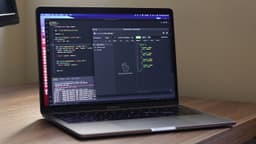How to Secure Your CodeIgniter Application
Are you a CodeIgniter developer aiming to enhance your web applications' security? Security is vital for any application, especially when handling sensitive user data. This article highlights best practices and techniques to help you secure your CodeIgniter applications effectively.
Understand CodeIgniter Security Features
CodeIgniter includes built-in security features to protect against common vulnerabilities such as XSS (Cross-Site Scripting), CSRF (Cross-Site Request Forgery), and SQL injection attacks. Utilizing these features correctly can significantly enhance your application's security.
XSS Protection
Cross-Site Scripting (XSS) allows attackers to inject malicious scripts into web pages. CodeIgniter has XSS filtering that sanitizes input data automatically, helping to prevent XSS attacks. Enable this feature by setting config['global_xss_filtering'] = true; in the configuration file.
CSRF Protection
Cross-Site Request Forgery (CSRF) tricks users into executing unwanted actions on web applications. CodeIgniter provides CSRF protection through unique tokens for each form submission. Use the form_open() function in views to include the necessary CSRF token automatically.
SQL Injection Prevention
SQL injection attacks occur when harmful SQL queries manipulate your database. CodeIgniter's Active Record class helps prevent SQL injection by escaping user input automatically when querying the database. Use Active Record methods like get(), where(), and insert() to reduce SQL injection risks.
Sanitize User Input
Inadequate input validation is a common security vulnerability. Properly sanitizing and validating user input can prevent attacks like XSS and SQL injection. CodeIgniter offers helper functions, such as xss_clean(), form_validation, and security, for this purpose.
Php
Always validate user input on the server side, even with client-side validation using JavaScript. Server-side validation serves as an additional layer of security.
Secure Configuration and Environment
Protecting sensitive configuration data is essential for application security. Avoid hardcoding credentials directly into the codebase. Instead, use environment variables or configuration files outside the web root.
Keep your CodeIgniter installation updated with the latest security patches. Regularly check for updates and follow CodeIgniter's official documentation for security advisories and best practices.
Implement Role-Based Access Control
What is Role-Based Access Control (RBAC)? It is a security model that grants permissions based on user roles within an application. Implementing RBAC in your CodeIgniter application allows for controlled access to specific resources and functionalities.
Use CodeIgniter libraries like ion_auth or FlexiAuth for managing authentication and authorization. Define user roles such as admin, editor, and member, and assign appropriate permissions for proper access control.
Use HTTPS for Secure Communication
Why is securing data transmission important? It prevents eavesdropping and man-in-the-middle attacks. Implementing HTTPS (Hypertext Transfer Protocol Secure) encrypts communication between the client and server, ensuring data confidentiality.
Obtain an SSL/TLS certificate from a trusted Certificate Authority (CA) and configure your CodeIgniter application to use HTTPS. Update your base URL in the config.php file to use the https:// protocol.
Php
Monitor and Audit Application Activities
Regular monitoring and auditing of your CodeIgniter application can help detect security incidents quickly. Implement logging mechanisms to record critical events, errors, and user activities. Monitoring logs can help identify suspicious behavior and potential security breaches.
Consider using tools like Monolog or Loggly to centralize logs effectively. Set up alerts for unusual activities to proactively address security threats. Conduct periodic security audits and penetration testing to assess the overall security posture of your application.
Securing your CodeIgniter application is an ongoing process that requires continuous improvement. Incorporate these security practices and techniques to strengthen your applications against potential threats and vulnerabilities. Prioritize security throughout your development workflow to safeguard your CodeIgniter projects effectively.












